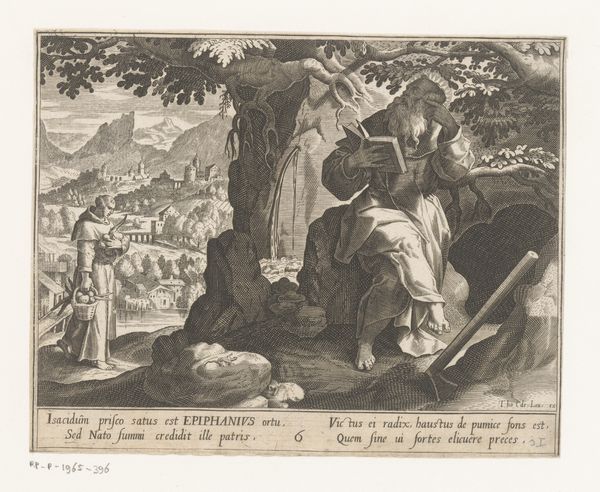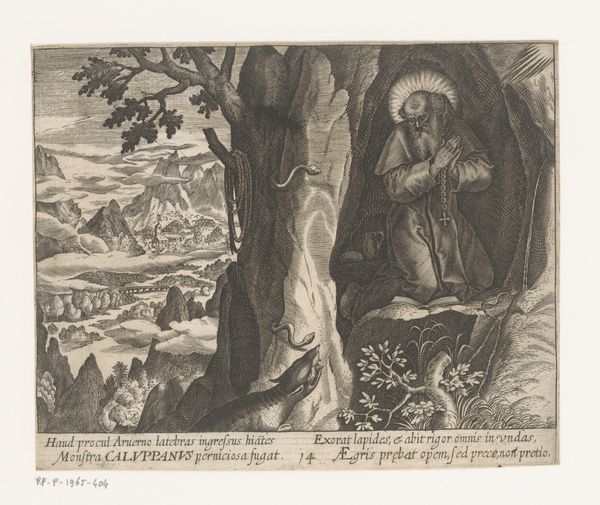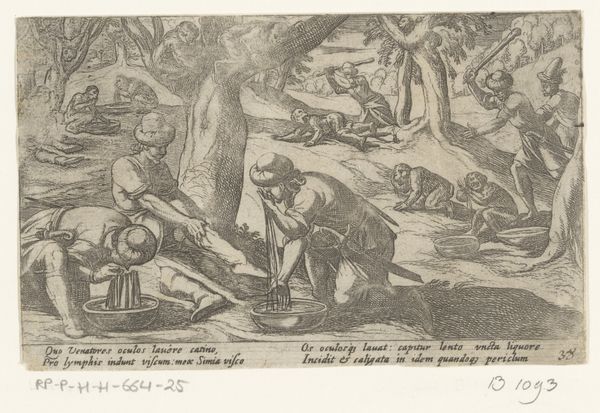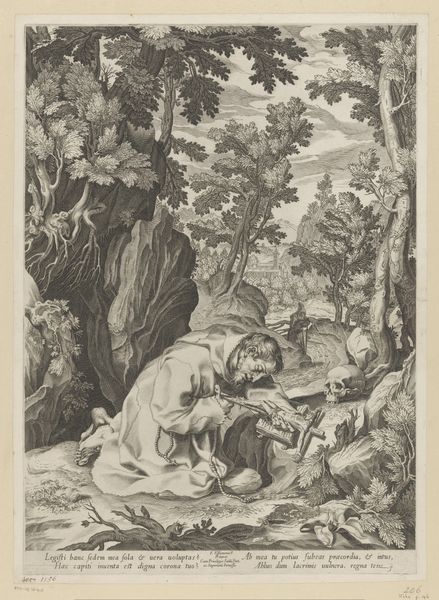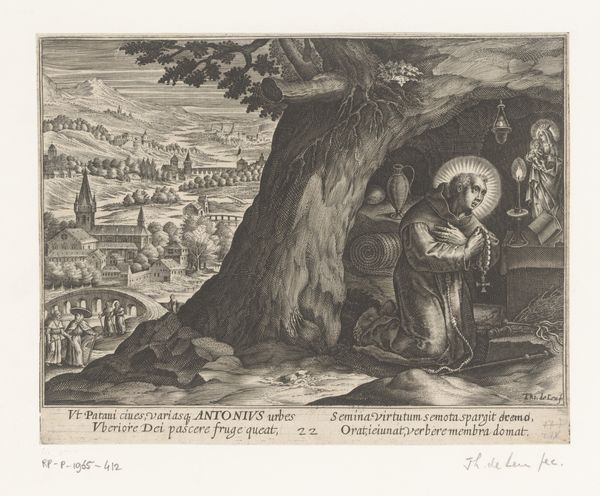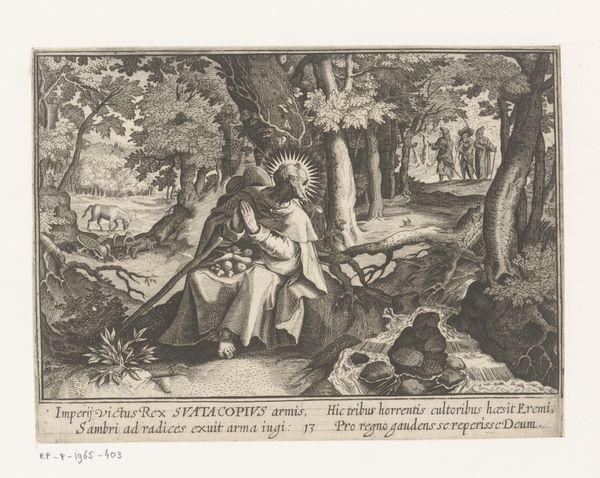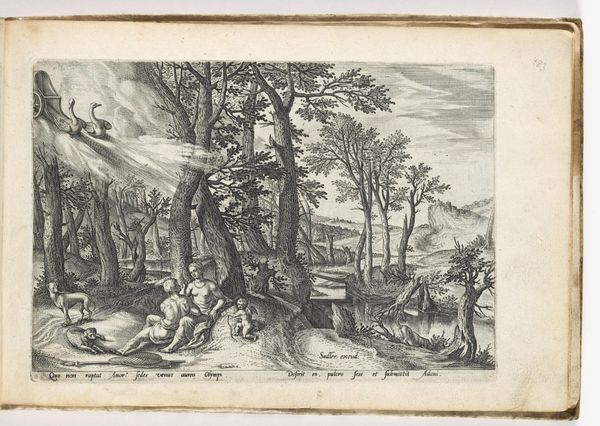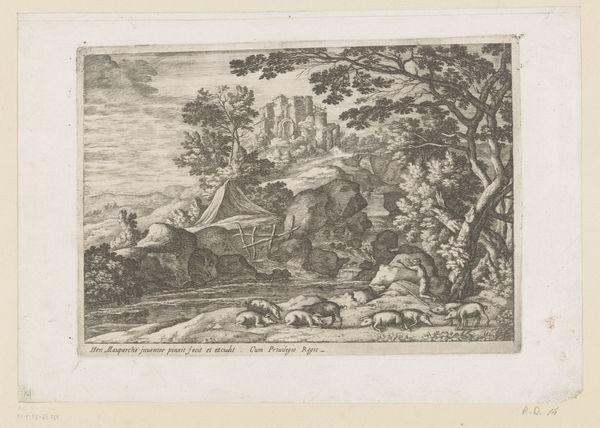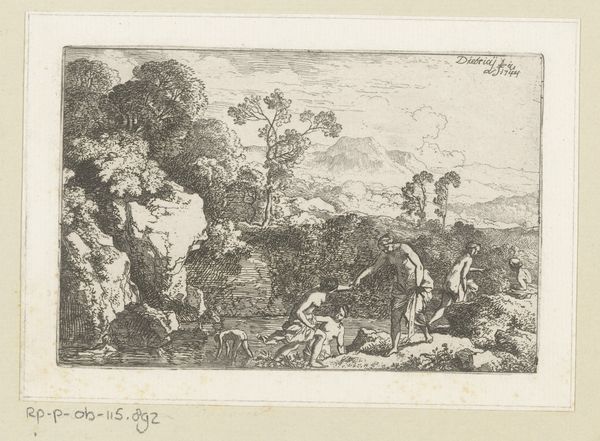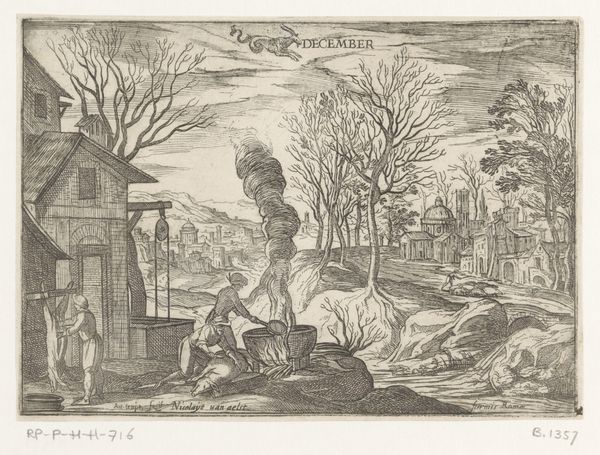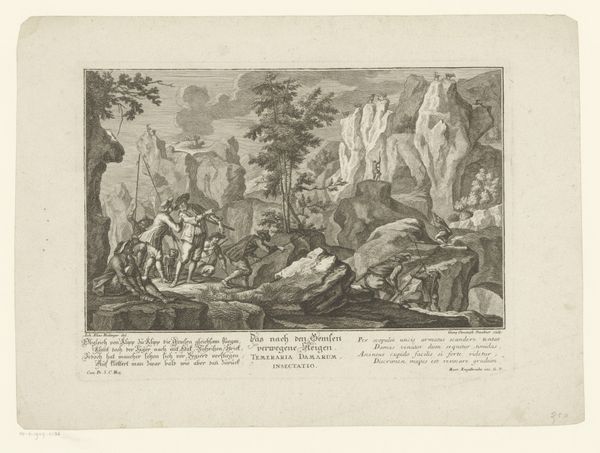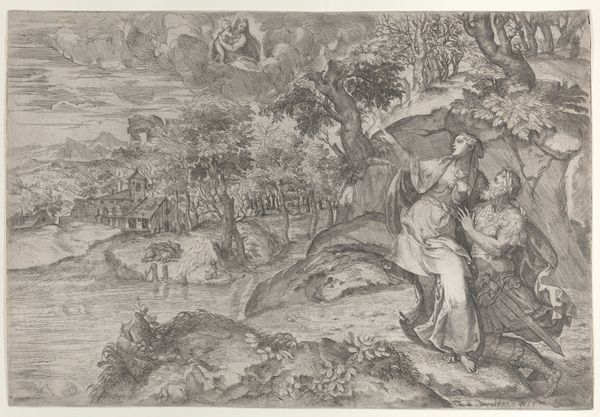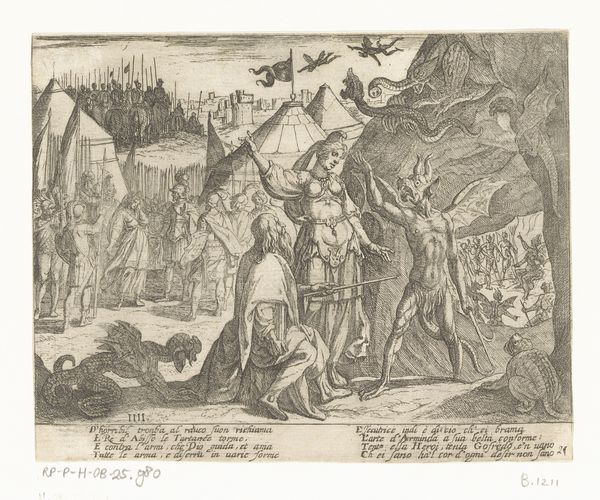
print, engraving
# print
#
landscape
#
mannerism
#
history-painting
#
engraving
Dimensions: height 146 mm, width 190 mm
Copyright: Rijks Museum: Open Domain
Curator: This engraving, "Heilige Paternus als kluizenaar," or "Saint Paternus as a Hermit," by Thomas de Leu, dates from after 1598. It presents a striking contrast. What are your immediate impressions? Editor: Stark! There’s a real dichotomy here—the textures are so meticulously worked, especially on the rocks and bark. Yet, there's a strange, almost unsettling smoothness to the sky and distant landscape. I'm interested in the printing process—what kind of paper, and how were those fine lines achieved? Curator: The medium, engraving, inherently lends itself to that detailed linework typical of mannerism. I’m drawn to the image's narrative aspects, how it intersects with broader themes of religious devotion, escape, and the search for spiritual solace during a time of significant social and religious upheaval. What does it mean to represent sainthood this way, situated outside of communal settings? Editor: Exactly! It's about stripping away the veneer. Look how labor is embedded in every scratch of the engraver's tool. And see Paternus there, almost burrowing into the earth; his physical existence becomes almost indistinguishable from the natural world itself, rendered in material. His spirituality is inextricably linked to tangible creation. Curator: It's a deliberate rejection of earthly pleasures and the confines of societal expectation. His isolation becomes a powerful act of resistance, an assertion of his individual will in relation to faith. The positioning of Paternus on the edges of established culture mirrors contemporary theories about marginality and identity, as well as challenging definitions of spirituality in relationship to the natural world. Editor: True, but note the presence of the tiny building. A little church, it seems. To me, that detail provides context to how the natural, available materials themselves, were likely deemed to be antithetical to more traditionally sanctioned religious imagery. What if that’s an artistic statement itself—a visual critique on consumerism within the Church, then, and perhaps still now? Curator: A worthwhile consideration. Reflecting on our different readings, it shows that despite the constraints of medium and historical context, the engraving facilitates complex interpretations relating to labor and religion. Editor: Precisely. This pushes us to think about the enduring relevance of art, not just as an aesthetic object, but also as a catalyst for thinking through our relationships with production and faith, materiality, and history.
Comments
No comments
Be the first to comment and join the conversation on the ultimate creative platform.
